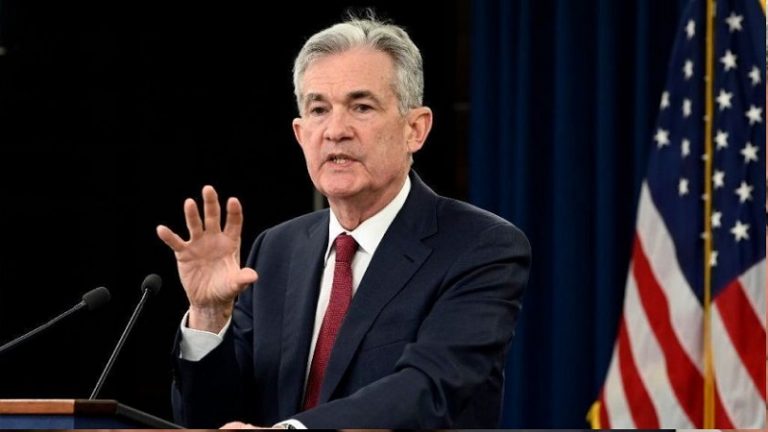
The Federal Reserve announced the withdrawal of its 2022 supervisory letter (SR 22-6 / CA 22-6), which had required state member banks to notify the Fed in advance of engaging in crypto-asset-related activities. It also rescinded a 2023 supervisory letter (SR 23-8 / CA 23-5) that outlined a nonobjection process for banks engaging in dollar token (stablecoin) activities. Additionally, the Fed, alongside the FDIC and OCC, withdrew two 2023 joint statements cautioning banks about crypto-related risks.
This shift eliminates the prior notification and approval requirements, allowing banks to handle crypto transactions under standard supervisory processes. The move aligns with evolving risk assessments and aims to foster innovation, reflecting a more permissive stance under the Trump administration. Banks are still expected to manage risks like volatility, cybersecurity, and compliance with laws, but the regulatory burden has been significantly reduced, potentially enabling broader crypto adoption in banking.
Banks no longer need prior Federal Reserve notification or nonobjection for crypto-asset or stablecoin activities. This reduces bureaucratic hurdles, enabling faster integration of crypto services like transaction processing, custody, or stablecoin issuance. Lower regulatory friction may encourage more banks, especially smaller state member banks, to engage with crypto markets. This could lead to broader mainstream adoption of cryptocurrencies and stablecoins in traditional finance.
Register for Tekedia Mini-MBA edition 19 (Feb 9 – May 2, 2026): big discounts for early bird.
Tekedia AI in Business Masterclass opens registrations.
Join Tekedia Capital Syndicate and co-invest in great global startups.
Register for Tekedia AI Lab: From Technical Design to Deployment (next edition begins Jan 24 2026).
The move signals a pro-innovation stance, likely influenced by the Trump administration’s crypto-friendly policies. Banks may explore new products, such as crypto payment systems or tokenized asset services, fostering competition and technological advancement. Despite deregulation, banks must still address crypto-related risks (e.g., volatility, cybersecurity, AML/KYC compliance). Supervisors will monitor these under standard frameworks, meaning banks need robust risk controls to avoid regulatory scrutiny.
Easier bank access to crypto could enhance liquidity and stability in crypto markets, as institutional involvement grows. It may also drive demand for stablecoins and other digital assets, potentially impacting their valuation and use cases. The U.S. is positioning itself as more crypto-friendly, potentially competing with jurisdictions like the EU or Singapore. However, it risks falling behind if comprehensive crypto legislation lags, as regulatory clarity remains incomplete.
Reduced oversight could expose banks to crypto market volatility or illicit finance risks if risk management is inadequate. This might lead to future regulatory tightening if incidents occur. Overall, this shift fosters a more permissive environment for banks to engage with crypto, likely accelerating its integration into traditional finance, but it hinges on banks’ ability to manage risks effectively.
With reduced regulatory barriers, banks may more readily engage with DeFi protocols, such as by facilitating transactions, providing custody for DeFi-related assets, or integrating with stablecoin ecosystems (e.g., USDC, USDT). This could create on-ramps for traditional finance users to access DeFi. Banks processing crypto transactions could funnel institutional capital into DeFi platforms, increasing liquidity in decentralized exchanges (DEXs), lending protocols, and yield farming pools.
Stablecoin Adoption in DeFi
The removal of the nonobjection process for dollar token activities may encourage banks to issue or support stablecoins, which are critical to DeFi’s ecosystem (e.g., for trading pairs, lending, and collateral). This could enhance stablecoin reliability and trust, driving DeFi adoption. Banks might develop their own stablecoins or partner with existing issuers, integrating them into DeFi protocols, which could reduce reliance on non-bank issuers and align DeFi with regulatory standards.
Centralized vs. Decentralized Services: As banks offer crypto services (e.g., custody, trading, lending), they may compete directly with DeFi platforms, which provide similar functions without intermediaries. Banks’ regulatory compliance and trust could draw users away from DeFi, especially for institutional or risk-averse clients. Some banks might integrate DeFi protocols into their offerings (e.g., using DEXs for liquidity or yield farming for client portfolios), blurring the line between centralized and decentralized finance.
As banks engage with DeFi-related assets or protocols, regulators may focus more on DeFi’s risks (e.g., smart contract vulnerabilities, money laundering). This could lead to future regulations targeting DeFi, potentially stifling innovation or forcing protocols to adopt compliance measures. Bank involvement could lend credibility to DeFi, encouraging regulators to create clearer frameworks rather than outright bans, fostering a more stable environment for DeFi growth.
Bank participation could spur DeFi protocols to innovate, offering more sophisticated products to compete with bank services (e.g., advanced yield strategies, cross-chain interoperability). Banks acting as gateways could make DeFi more accessible to retail users unfamiliar with wallets or blockchain interfaces, expanding DeFi’s user base.
Bank involvement might undermine DeFi’s decentralized ethos, as institutions could prioritize permissioned or semi-centralized systems. This could fragment the DeFi ecosystem between purist protocols and bank-friendly hybrids. Increased institutional capital could amplify volatility in DeFi markets, as banks’ large-scale transactions impact token prices or liquidity pools.
The policy shift aligns the U.S. with crypto-friendly jurisdictions, potentially attracting DeFi developers and projects to operate domestically. However, without comprehensive crypto legislation, DeFi’s regulatory uncertainty persists compared to regions like the EU with MiCA frameworks. The Fed’s deregulation could bridge DeFi with traditional finance, boosting liquidity, stablecoin use, and user access while fostering competition and innovation. However, it may also introduce regulatory scrutiny, centralization risks, and competition from banks, challenging DeFi’s decentralized principles.



